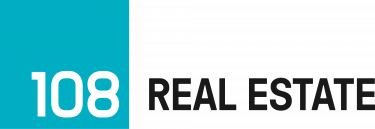
Investment opportunities
The Czech investment market faced numerous challenges in 2023, including an unfavorable macroeconomic situation, high interest rates, and inflation. Despite these challenges, the market showed resilience with domestic investors representing 82% of investment deals.
Overall
The Czech market faces numerous challenges due to an unfavorable macroeconomic situation. In 2023, the total investment volume in the Czech Republic reached approximately 1.35 billion, marking a slight drop compared to 2022. Domestic investors are increasingly becoming a backbone of the Czech investment market, representing around 82% of investment deals in 2023. Despite the country being seen as a safe haven for investments, the slowdown in investment activity persists. High interest rates, implemented by national banks to counteract high inflation, are dissuading some investors. Many private investors and companies are awaiting more favorable loan conditions or better prices before making investment decisions. We anticipate a partial recovery in the investment market in 2024 as national banks are expected to reduce interest rates. Projected inflation levels returning to a more favorable range will aid in reviving real wages and household consumption. The Czech investment market is still coping with the consequences of COVID-19 economic downturn as does the entire economy. This environment is unlike any other in EU countries.
Industrial sector
Industrial market continues to have strong results, despite a slight drop in demand from logistics and transportation companies. By the end of 2023, the total stock of industrial premises for lease reached 12 mil. sq m with a vacancy rate hovering between 1.5 to 3 percent, which remains notably low. The increased demand from manufacturing companies, particularly in the first half of 2023, not only contributed to the overall demand but also prevented a significant increase in the vacancy rate. Construction activity is still strong and industrial developers are continuing in speculative construction. Developers across the market are investing in green energy sources, primary in photovoltaics. Due to industrial real estate being viewed as critical infrastructure post-COVID-19, we anticipate steady growth in this sector.
Retail sector
Retail properties were among the most significant investment assets subject to investment or divestment in 2023. Retails parks have also proven their crisis resilience, attracting investors in return. Consequently, retail yield is on the rise. However, new development remains limited, with the focus placed on refurbishing and remodeling existing centers. The majority of new development is confined to smaller retail park concepts. While shopping centers have rebounded effectively after the pandemic, smaller local retail parks contend with reduced margins due to increased operating costs. Simultaneously, local retailers face constraints in setting prices for good owing to lower wages and diminished purchasing power in regions.
Office sector
The Prague office market did not witness significant growth in 2023 due to a halt in construction activity within this sector. For year and a half, no new office building of “A” class standard entered the construction phase. The vacancy rate remained stable, fluctuating between 7.0 to 8.0% with some tenants offering sublease options for a portion of their premises. Prime rents experienced only marginal growth throughout 2023, reaching a level of 28.50 EUR/sq m/month. In 2024, we anticipate rent increases driven by the lack of new developments and higher inflation in the first half of the year. Despite this, rising occupancy costs and substantial relocation expenses are impacting occupier demand, potentially leading to a rise in renegotiations and subletting. This evolving trend is already reshaping the market and is likely to gain further prominence.
|
Michal Bílý |
 |

